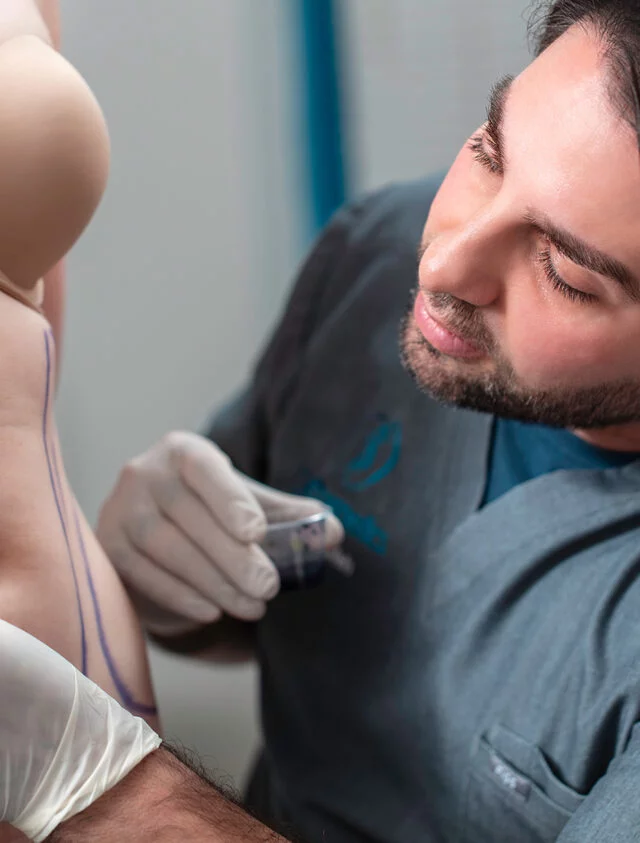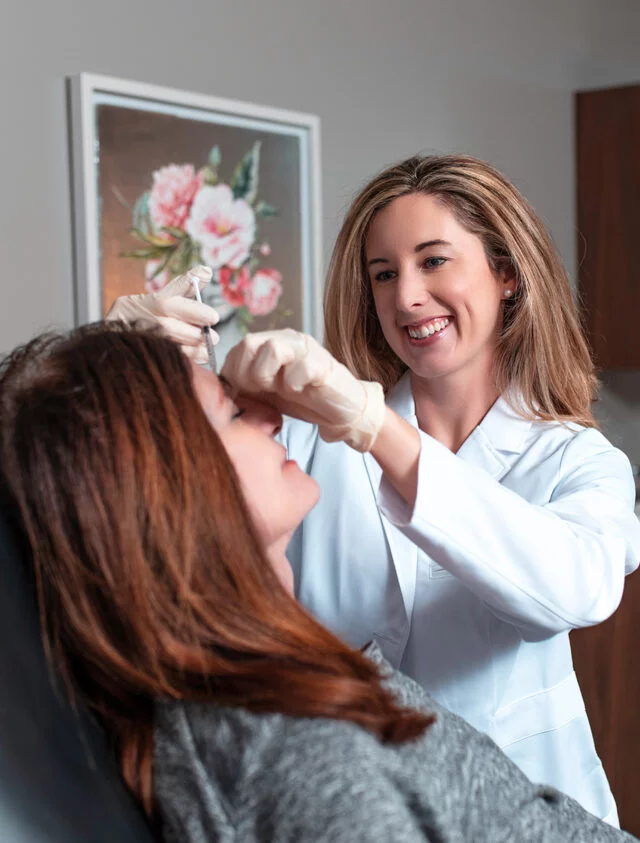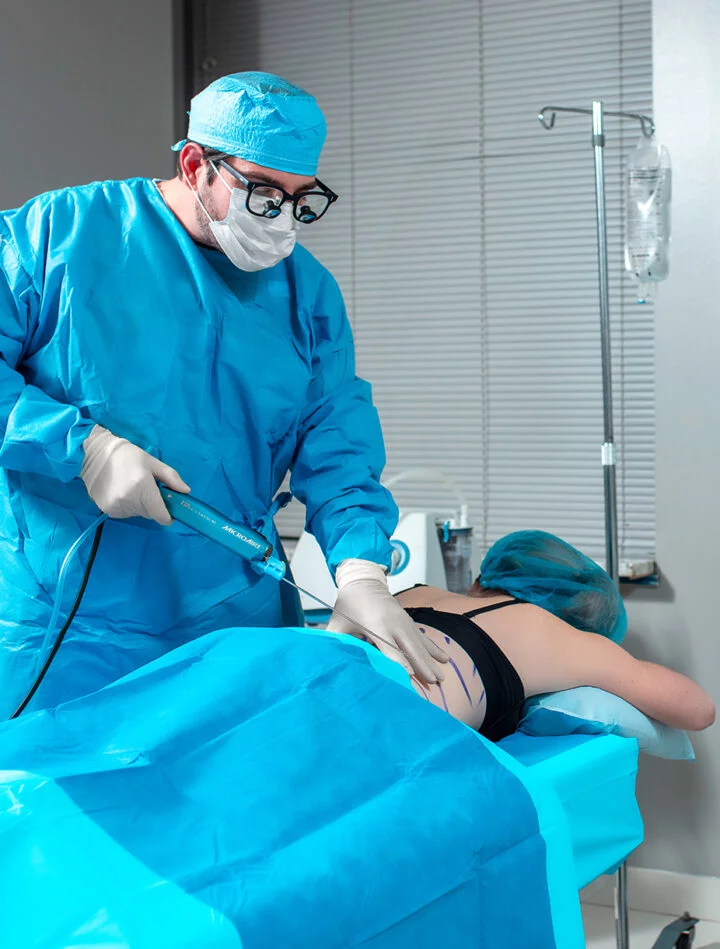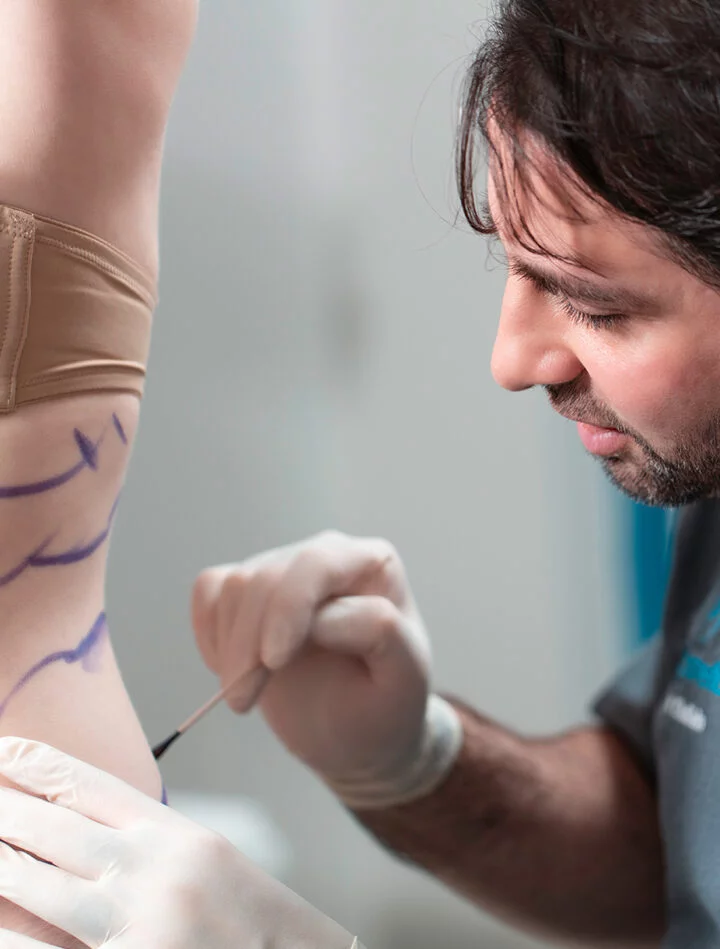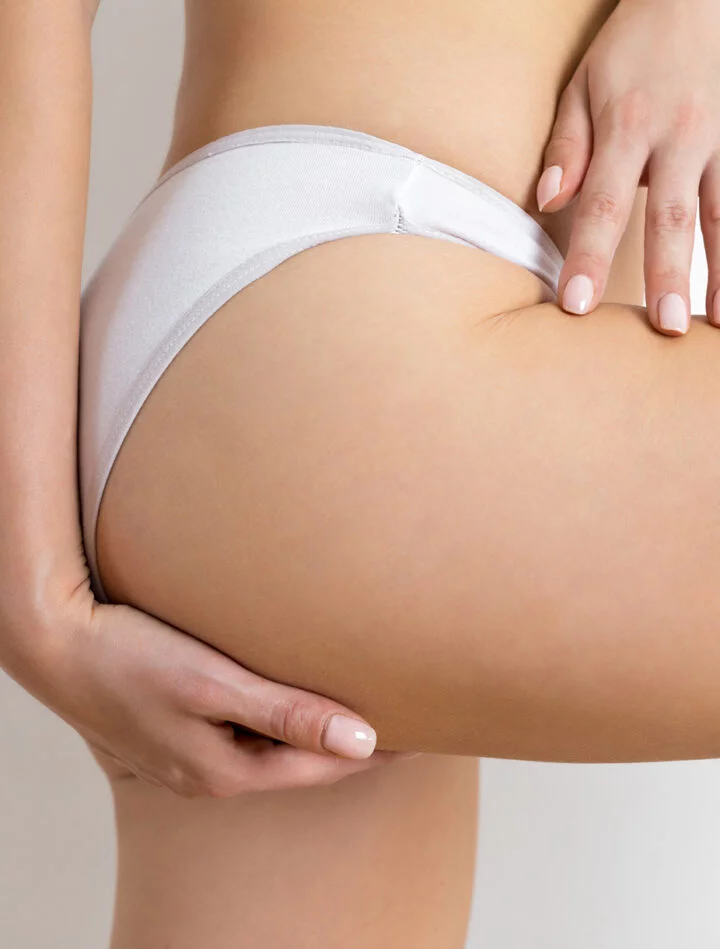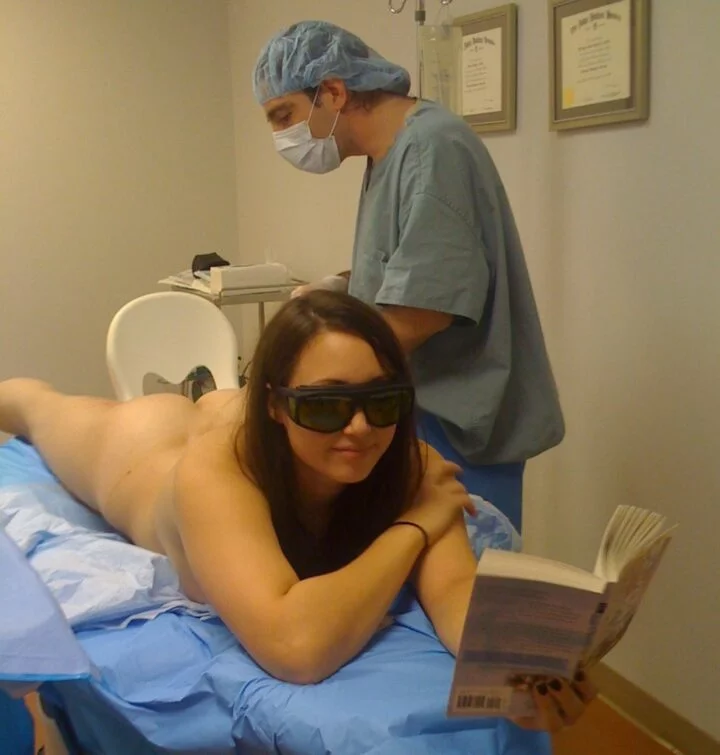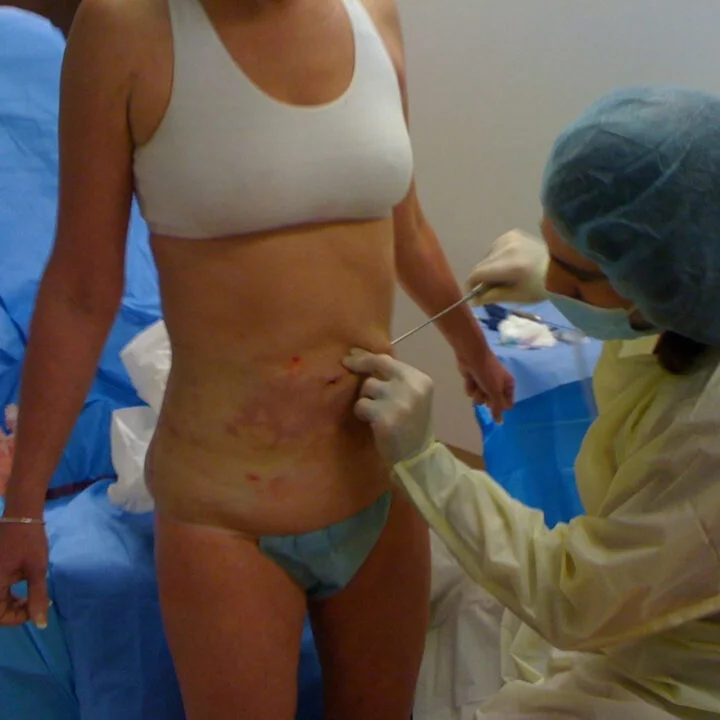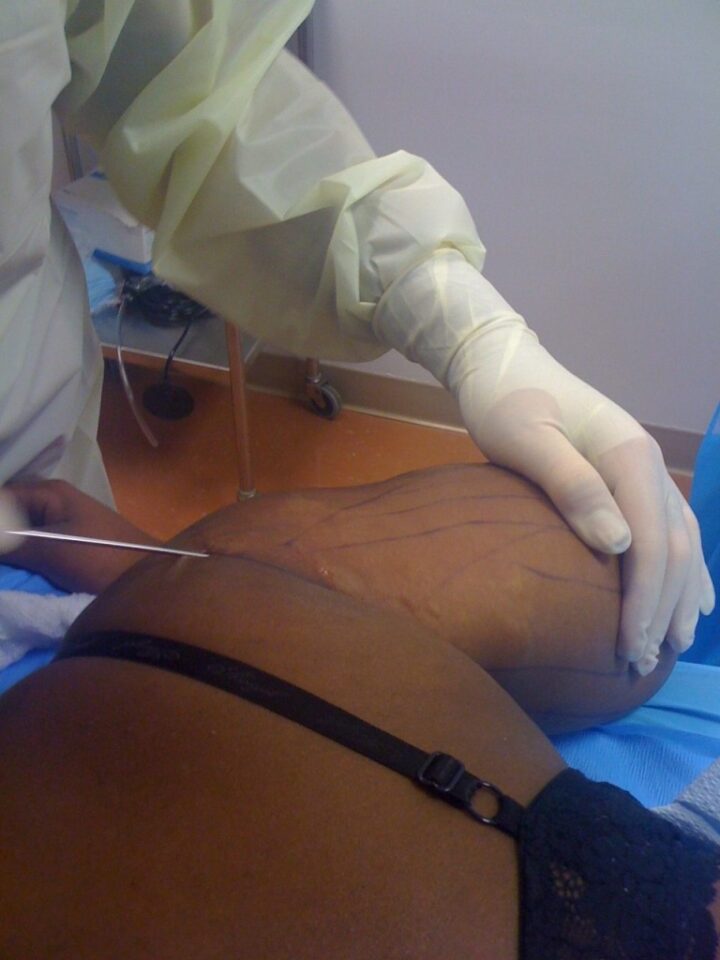What is lipedema?
Lipedema is a chronic medical condition characterized by the symmetric enlargement of the legs due to deposits of fat beneath the skin. It primarily affects women and is often misdiagnosed as simple obesity or lymphedema. It can also occasionally affect the arms.
Characteristics of Lipedema:
- Fat Distribution:Abnormal accumulation of fat, primarily in the legs and sometimes the arms, but sparing the feet and hands, creating a "bracelet" effect at the ankles and wrists.
- Pain and Bruising:The affected areas are often tender or painful and may bruise easily.
- Progressive Nature:Lipedema is a progressive condition, meaning it worsens over time, especially without treatment. It often develops or worsens at puberty, during pregnancy, after gynecologic surgery, or around the time of menopause, which suggests a hormonal component to the disease.
- Symmetry:It usually affects both sides of the body symmetrically.
- Non-Pitting:Unlike lymphedema, lipedema is typically non-pitting, meaning it does not leave a dent when you press the skin.
Stages of Lipedema
Lipedema progresses through various stages characterized by increasing amounts of abnormally distributed fat and other changes in the skin and tissue. They are generally classified as:
Stage 1
The skin is smooth, but there is an increased amount of evenly distributed fat.
Stage 2
The skin becomes uneven, with fatty bulges, and there may be the development of lipomas (benign fatty tumors).
Stage 3
Large protruding fatty lobules lead to substantial deformity, and mobility can become increasingly limited.
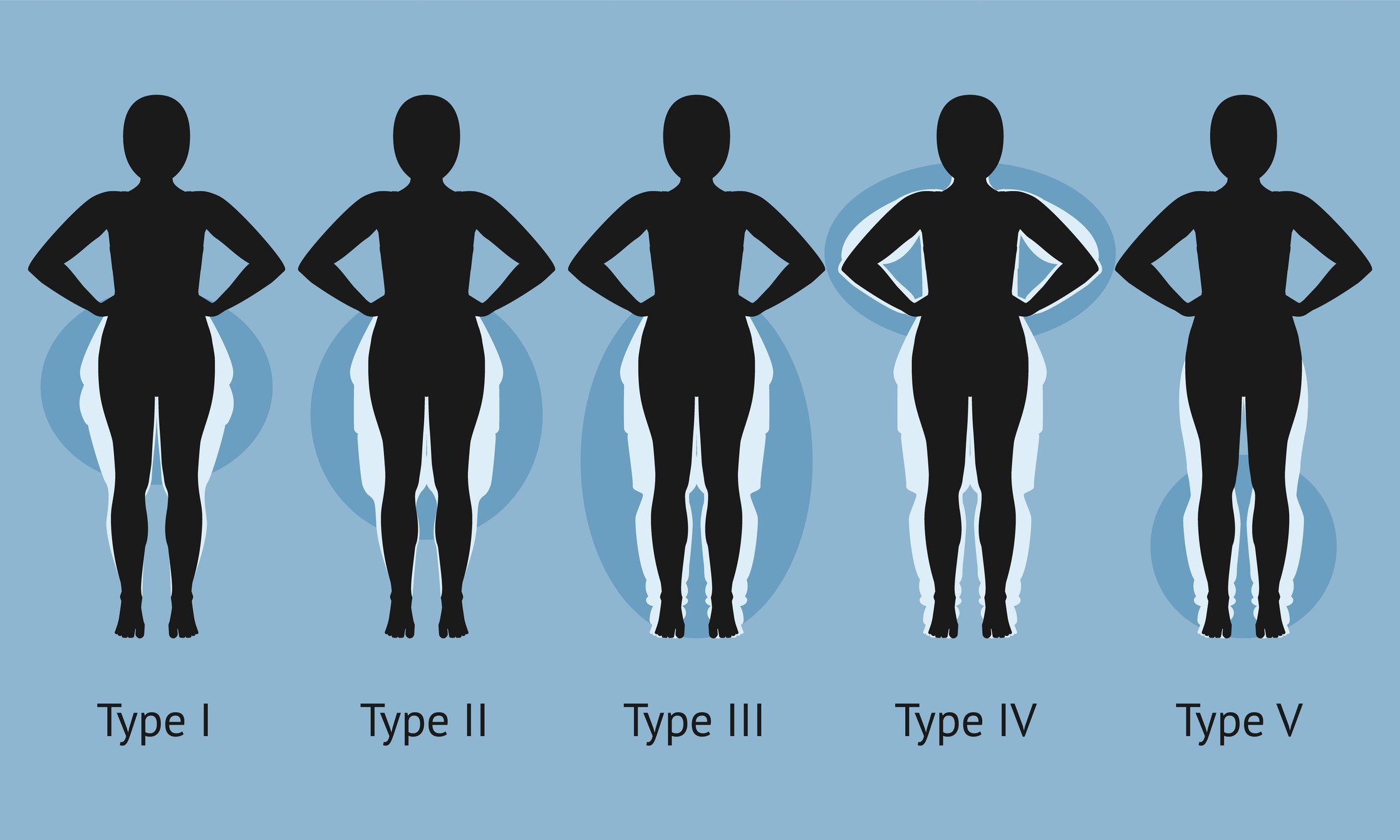
Diagnosis
Diagnosing lipedema can be challenging because it is not widely recognized, and it shares characteristics with other conditions like obesity and lymphedema. A careful physical examination, patient history, and sometimes additional testing such as lymphoscintigraphy can help in diagnosing lipedema.
Causes of Lipedema
- Genetics:Lipedema often runs in families, suggesting a genetic predisposition. Some studies have indicated that it may be inherited in an autosomal dominant manner, though the exact genes involved have not been identified.
- Hormonal Factors:The onset of lipedema is frequently associated with hormonal changes or events, such as puberty, pregnancy, menopause, or after gynecological surgery. This suggests that hormones might play a significant role in the development or progression of the condition.
- Inflammation:Some research suggests that inflammation might play a role in lipedema. This is based on findings that show increased levels of inflammatory markers in the affected tissues.
- Blood and Lymphatic Vessels:Abnormalities in the blood and lymphatic vessels might contribute to the development or progression of lipedema. Some studies have shown that people with lipedema have abnormalities in the blood vessels that lead to increased permeability, which can result in fluid and large molecules leaking out of the vessels and into the surrounding tissues.
- Adipose Tissue (Fat) Abnormalities:Lipedema fat is different from regular fat. It can produce inflammatory substances, and its growth might be influenced by various factors that are not yet fully understood.
- Microtrauma:Repeated minor injuries to the tissue, such as those caused by bumping or knocking the legs, may play a role in the progression of lipedema in some people. This is still a speculative idea and requires further research.
Despite the above insights, the exact cause of lipedema remains unknown. It's a complex condition likely resulting from a combination of genetic, hormonal, and environmental factors. Early diagnosis and management are essential as lipedema can lead to pain, swelling, and mobility issues if untreated.
Treatments for Lipedema
Lipedema is a chronic condition, and while there is no cure, several treatments can help manage symptoms, reduce complications, and improve the quality of life for affected individuals. The goals of treatment are to reduce pain, prevent progression, improve lymphatic flow, and address cosmetic concerns. Here are some of the primary treatments and management strategies:
- Compression Therapy:
- Compression Garments:Wearing specially designed stockings or wraps can help reduce swelling, improve lymphatic flow, and provide support to painful tissues.
- Pneumatic Compression Devices:These are machines that inflate sleeves with multiple chambers in a specific sequence to massage the legs and improve lymphatic flow.
- Manual Lymphatic Drainage (MLD):A specific type of massage that promotes the drainage of lymph fluid from the limbs. It's essential to find a therapist trained in MLD for best results.
- Exercise:Regular, low-impact exercises like swimming, walking, or cycling can help improve lymphatic circulation and overall well-being. It's also beneficial for joint health and can aid in weight management.
- Diet and Weight Management:While losing weight doesn't cure lipedema, managing weight can help reduce the risk of other associated health problems and may alleviate some symptoms. A balanced, anti-inflammatory diet may also provide some symptom relief.
- Surgery:
- Liposuction:Specialized forms of liposuction, such as tumescent liposuction or water-assisted liposuction, can remove lipedema fat. It can reduce pain, swelling, and improve the cosmetic appearance of the legs. However, it's essential to approach a surgeon experienced in treating lipedema, as traditional liposuction can exacerbate the condition.
- Excisional Surgery:In advanced cases, especially with large skin folds, removing excess skin and tissue might be necessary.
- Medications:Pain relief can be achieved using over-the-counter pain relievers like acetaminophen or NSAIDs. However, always consult a physician before starting any medication regimen.
- Psychological Support:Given the chronic nature of lipedema and the potential for body image concerns, seeking therapy or joining support groups can be beneficial for emotional and mental well-being.
- Skin Care:Proper skincare can help prevent infections, especially in folds of skin or areas with overgrowth.
- Avoid Prolonged Standing or Sitting:Changing positions regularly and elevating the legs can help reduce fluid accumulation.
Regular check-ups with healthcare providers familiar with lipedema are essential. Early diagnosis and intervention can significantly improve outcomes and quality of life for those with the condition. If someone suspects they have lipedema, they should seek evaluation by a physician experienced in recognizing and treating the disorder.
Liposuction for Lipedema
Liposuction for lipedema aims to remove the abnormal fat deposits associated with the condition. It's essential to use techniques that preserve the lymphatic vessels to avoid causing or worsening lymphedema. Several types of liposuction are considered effective and safe for individuals with lipedema, and Dr. Khalifeh will discuss with you his recommendation based on the location. He will usually treat lipedema with tumescent or PAL lipo, and avoid the use of lasers and ultrasound-assisted because of the need to preserve the lymphatics.
1. Tumescent Liposuction:
- This is the most commonly used technique for lipedema.
- It involves injecting a large volume of diluted solution (containing local anesthetic and a vasoconstrictor, usually lidocaine and epinephrine) into the subcutaneous fat. This makes the targeted fat swollen and firm ("tumescent"), allowing for more comfortable removal and reducing bleeding.
- The fatty tissue is then suctioned out through small incisions using thin tubes called cannulas.
2. Water-Assisted Liposuction (WAL):
- This technique uses a pressurized stream of water to dislodge and remove fat cells.
- The water is introduced through a specialized cannula, which simultaneously aspirates (suctions out) the fat and infused fluid.
- It's considered gentler on tissues and might result in less bruising and swelling compared to other methods.
3. Power-Assisted Liposuction (PAL):
- PAL uses a cannula with a vibrating tip to break up fat cells, making it easier to aspirate the fat.
- The vibrations can help in penetrating dense lipedema fat and allow for more precise removal.
4. Ultrasonic-Assisted Liposuction (UAL):
- UAL uses ultrasonic energy to break down fat cells before they are removed.
- The technique is generally more aggressive than other methods and might carry a higher risk of complications, especially if not done by an experienced surgeon.
5. Laser-Assisted Liposuction (LAL or SmartLipo):
- This method employs laser energy to liquefy fat cells before aspiration.
- Like UAL, it's more aggressive and may have a higher risk of complications if not performed with care.
6. Suction-Assisted Liposuction (SAL):
- This is the traditional form of liposuction, where a suction pump is used to remove the fat through a cannula.
- While still used, newer techniques like tumescent and water-assisted liposuction are often preferred for lipedema due to their gentler nature and reduced risk of tissue damage.
When considering liposuction for lipedema, it's crucial to consult with a surgeon experienced in treating lipedema patients and who does a lot of liposuction, such as Dr. Khalifeh. They can provide guidance on the most suitable technique for an individual's specific case and ensure that the procedure is performed safely. It's also essential to remember that while liposuction can alleviate many symptoms of lipedema, it's not a cure for the underlying condition. Regular follow-up and continued management are necessary.
Insurance and Lipedema
A lot of insurance companies will cover lipedema, but the coverage will require a lot of discussion with the insurnace company as compared to other surgeries. This is because they will often deny coverage based on the labeling of the procedure as "cosmetic" and based on the relative recent introduction of lipedema as a recognized disease. For this, we recommend patients use a specialized patient-advocacy group that will take their case and help them submit to insurance. This is the most successful way to ensure that insurance covers the high costs of surgery. more information on the patient advocacy group, coverlipedema.org , can be found:
We will work with your insurance company after your get the services of coverlipedema.org to try to get your insurance covered. We cannot do it without their expertise, so we cannot directly obtain authorization for you unless you work with a professional advocate. We also accept self pay patients but we highly recommend, if you have insurance, to see if you can get coverage first.

Dr. Khalifeh and Lipedema
Dr. Khalifeh has been performing liposuction for many years, before lipedema became recognized. he often got patients with extremity pain and difficulty walking who he treated with liposuction over the years, and now he is committed to providing this helpful therapy to more lipedema patients. He attends conferences on the subject to provide patients with a high level of expertise. He offers both awake (smaller volume/staged treatments) and asleep in hospital (higher volume) treatments.
Dr. Khalifeh will be attending the First World Congress on Lipedema in Potsdam, Germany as he was invited there by the growing colleagues around the country that treat lipedema and who are involved in research on the subject.

Related pages and posts
Additional Related Pages
(703) 543-9252 in Virginia.
5454 Wisconsin Ave
Suite 1710
Chevy Chase, Maryland 20815
8180 Greensboro Drive
site 1015
Mclean, VA 22102



